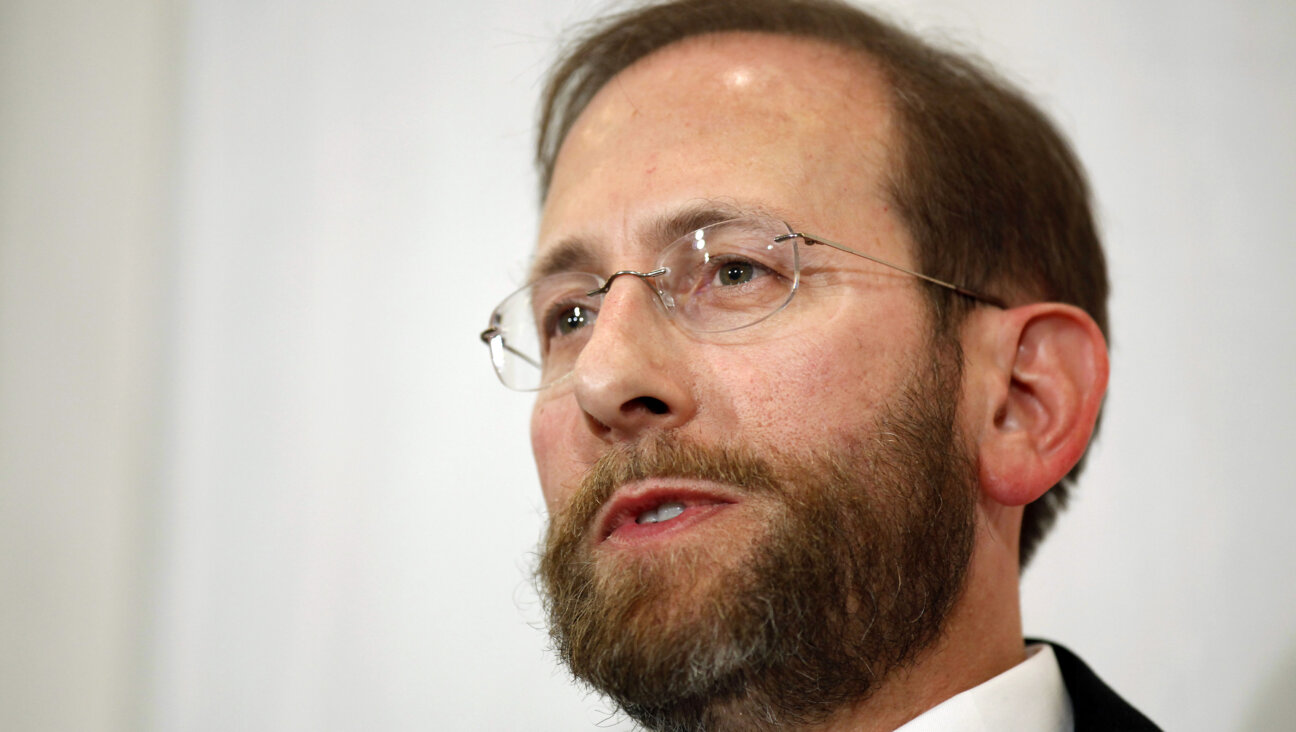You Keep on Knockin’ But You Can’t Come In
Knocking on Heaven’s Door: American Religion in the Age of Counterculture
By Mark Oppenheimer
Yale University Press, 304 pages, $30.
* * *|
Two years ago, my friends and I were driving back from the Burning Man festival, which takes place late summer every year in Black Rock City, Nev. We were tired, hung over and still filled with the euphoria, chaos and altered consciousness of the preceding week, and so, as the drive through the desert threatened to put us all to sleep, I turned on the radio. Out blared the false tones of a commercial hawker, advertising cars, stores and the station itself. We couldn’t handle it. After a week fully immersed in a living, breathing counterculture — what cultural critic Hakim Bey calls a “temporary autonomous zone” — where all commercialism is prohibited and all self-expression is encouraged, the alienation of contemporary America was too much to bear.
So I switched the dial to a Bible-thumping preacher on the AM radio. He was talking about sin, heaven and hell, but what he said and the way he said it made more sense to us, cohered more, than the supposedly more up-to-date ads and music on the commercial station. He sounded, one of my friends remarked, like a fellow traveler.
Mark Oppenheimer’s new book, “Knocking on Heaven’s Door: American Religion in the Age of Counterculture,” is about the interaction between the counterculture and mainstream religion, primarily in the Nixon years of the late 1960s to mid-1970s. Oppenheimer’s main thesis is that the religious significance of “the sixties” (a concept he recognizes early on to be incoherent but uses, with reservations, anyway) lies not in the introduction of what he calls “alternative” religions but in the adoption by mainstream religious sects of the norms of the era. Spending time with Unitarians, Catholics, Jews, Episcopalians and Baptists, Oppenheimer scrupulously records how these very different religious communities evolved new forms, and sometimes new theological substance, apparently in response to the new ideas of the era. The level of his scholarship is outstanding, and the book a lively, colorful read.
The sects’ responses to “the sixties” varied. Unitarians, who possessed a very accommodating and progressive theology (of which Oppenheimer seems strangely to disapprove), welcomed gay priests into their midst, albeit after a protracted battle. Catholics incorporated folk songs into the mass. Disaffected Jews created the chavurah movement, rejecting the forms of the synagogue and replacing them with more communal, participatory learning and worship circles. And so on. Oppenheimer convincingly makes the case that mainstream religions were able to change, did change, and changed in ways that are sometimes counterintuitive.
One of the counterintuitive conclusions offered by Oppenheimer is that religious communities with more hierarchy actually changed faster than those with less. Since the sixties were anti-hierarchy, one might expect that an entrenched hierarchical structure might inhibit the “bottom-up” change brought on by reformer groups. But Oppenheimer observes, echoing Yale cultural critic and computer scientist David Gelernter, that the sixties were in part a result of intellectuals wielding more power than ever before. Often, change came from the top — that is, educated elites. Thus, contrary to sixties ideology, sixties ideals were often spread most where popular resistance was thwarted by elite control.
These insights are well developed, and Oppenheimer’s research is thorough and professional. But I couldn’t help wondering if Oppenheimer, a visiting lecturer in religious studies at Stanford University, really, deeply understands his subject. What my friends and I understood that day in the desert is that religion is itself a counterculture. When it is true to itself, it stands against the bleak materialism of late 20th- and early 21st-century culture, posits values that do not correspond to the capitalist dream and offers a mental-spiritual state that is different from our ordinary one. And it demands that these changes in our consciousness manifest in social action. All this is also what the sixties were, in large part, about. To write a book about the intersection of religion and counterculture without recognizing that religion, in its essence and in many of its manifestations, is a counterculture, is highly problematic.
Oppenheimer’s analysis is further hampered by his refusal (or inability) to engage with the substance of religion qua religion. He never elucidates his own methodology, which is presumptively historical and materialist, and never engages with the many theorists and philosophers of religion from Clifford Geertz to Mircea Eliade or anyone in between. Although his history is adeptly presented, it might as well be a history of corporations for the amount of time he devotes to god-talk, spiritual practices or anything else that makes religion distinct from other social organizations. Oppenheimer’s analysis of the chavurah movement, for example, completely ignores its incipient panentheist theology, skips over its halachic orientations and focuses entirely on Mordecai Kaplan and Judaism as a civilization, claiming that the chavurah movement’s significance was that it brought Judaism out of moribund temples and into newer, “integrated” forms.
Certainly, the chavurah movement did so. But it did so for reasons that are essentially and inextricably theological. The mere fact that two illustrations in the chavurah chapter are captioned “Countercultural Jews loved the outdoors, which functioned as an implicit rejection of the institutional synagogue” and “Bob Dylan, nee Zimmerman, models his kinky ‘Jew-fro’ hair, which young, ethnically proud Jews adored” says much about where Oppenheimer’s focus lies and the relative shallowness of his analytical framework. Countercultural Jews loved the outdoors because they believed (and believe) the Divine presence to be manifest in nature, beliefs intimately connected both to sixties-era environmentalism and sixties-era nature religion. The “new paradigm,” Rabbi Zalman Schachter-Shalomi has said, “is panentheism.” Not Jew-fros.
What is interesting about “Knocking on Heaven’s Door” is that, although he is a young scholar (and a former student of mine at Yale), Oppenheimer’s methodological orientation is that of a previous generation of scholars. Most of today’s graduate students in religious studies are not only followers of a spiritual path themselves, but are increasingly allowing their own spiritual consciousness to inform their academic analysis. For example, the community of Jewish-mysticism graduate students, which I happen to know well, is no longer made up of supposedly objective historians in the mode of Gershom Scholem, or philologists in the mold of Joseph Dan. They are neochasidim like Shaul Magid, neokabbalists following Arthur Green and engaged postmodernists after Moshe Idel.
What these scholars “get,” and what Oppenheimer seems to miss, is that there is something distinctive about religion that makes its study different from straight history or sociology. When Oppenheimer says — twice — that “in the United States, religion must constantly sell itself,” he is betraying a fundamental misunderstanding of what religion does and how it operates. Changing its content to suit the needs of parishioners is not commercial. It isn’t “selling.” It is recognizing that religion is connected to our deepest yearnings, and often must speak to them in language that changes over time. Yes, it is significant that even mainline denominations like Episcopalianism embraced some of the social changes of the sixties. But it is far more significant that, as Oppenheimer notes, these sects did not wither but in fact flourished during a period that was supposedly so hostile to them. Why that flourishing happened cannot be explained by metaphors of “selling.”
The sixties were not hostile to religion so much as to the hijacking of religion by social class, to the desiccation of it by rationalism and to the moribund shells of religious observance that often marked mainstream practice. Is it any wonder that some of those who turned on and tuned in wanted not to drop out, but to daven?
Jay Michaelson is chief editor of Zeek: A Jewish Journal of Thought and Culture. His next book, “Antilawyerism and Antisemitism,” is forthcoming from University of Wisconsin Press.
The Forward is free to read, but it isn’t free to produce

I hope you appreciated this article. Before you go, I’d like to ask you to please support the Forward.
Now more than ever, American Jews need independent news they can trust, with reporting driven by truth, not ideology. We serve you, not any ideological agenda.
At a time when other newsrooms are closing or cutting back, the Forward has removed its paywall and invested additional resources to report on the ground from Israel and around the U.S. on the impact of the war, rising antisemitism and polarized discourse.
This is a great time to support independent Jewish journalism you rely on. Make a gift today!
— Rachel Fishman Feddersen, Publisher and CEO
Support our mission to tell the Jewish story fully and fairly.
Most Popular
- 1

Opinion The dangerous Nazi legend behind Trump’s ruthless grab for power
- 2

Opinion I first met Netanyahu in 1988. Here’s how he became the most destructive leader in Israel’s history.
- 3

Culture Did this Jewish literary titan have the right idea about Harry Potter and J.K. Rowling after all?
- 4

Opinion Yes, the attack on Gov. Shapiro was antisemitic. Here’s what the left should learn from it
In Case You Missed It
-

Opinion Itamar Ben-Gvir’s visit to a Jewish society at Yale exposed deep rifts between US Jews
-

Fast Forward On his first trip to Auschwitz, New Jersey governor urges vigilance against rising antisemitism
-

Fast Forward Survivors of the Holocaust and Oct. 7 embrace at Auschwitz, marking annual March of the Living
-

Fast Forward Could changes at the FDA call the kosher status of milk into question? Many are asking.
-
Shop the Forward Store
100% of profits support our journalism
Republish This Story
Please read before republishing
We’re happy to make this story available to republish for free, unless it originated with JTA, Haaretz or another publication (as indicated on the article) and as long as you follow our guidelines.
You must comply with the following:
- Credit the Forward
- Retain our pixel
- Preserve our canonical link in Google search
- Add a noindex tag in Google search
See our full guidelines for more information, and this guide for detail about canonical URLs.
To republish, copy the HTML by clicking on the yellow button to the right; it includes our tracking pixel, all paragraph styles and hyperlinks, the author byline and credit to the Forward. It does not include images; to avoid copyright violations, you must add them manually, following our guidelines. Please email us at [email protected], subject line “republish,” with any questions or to let us know what stories you’re picking up.
















